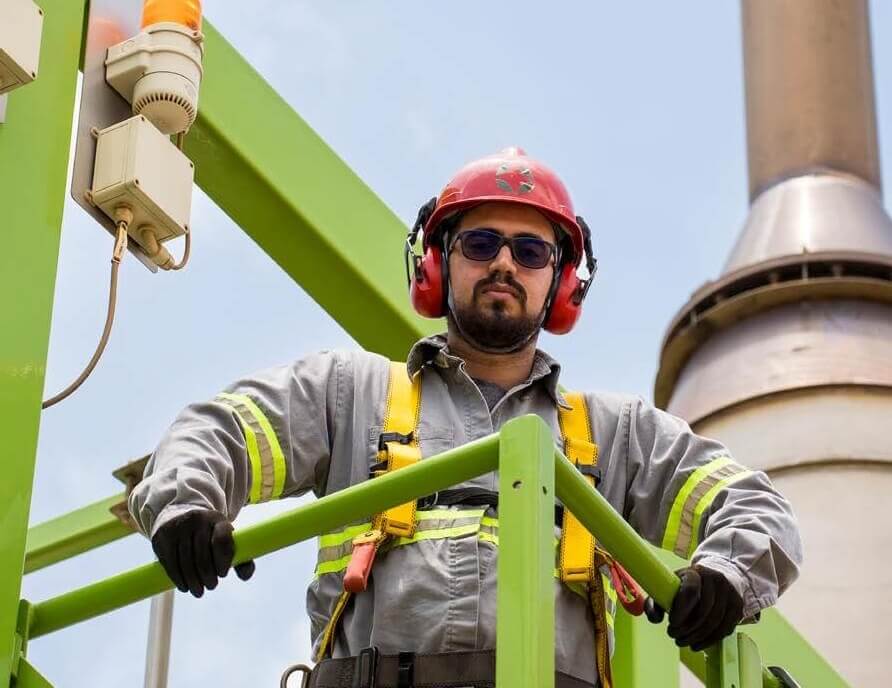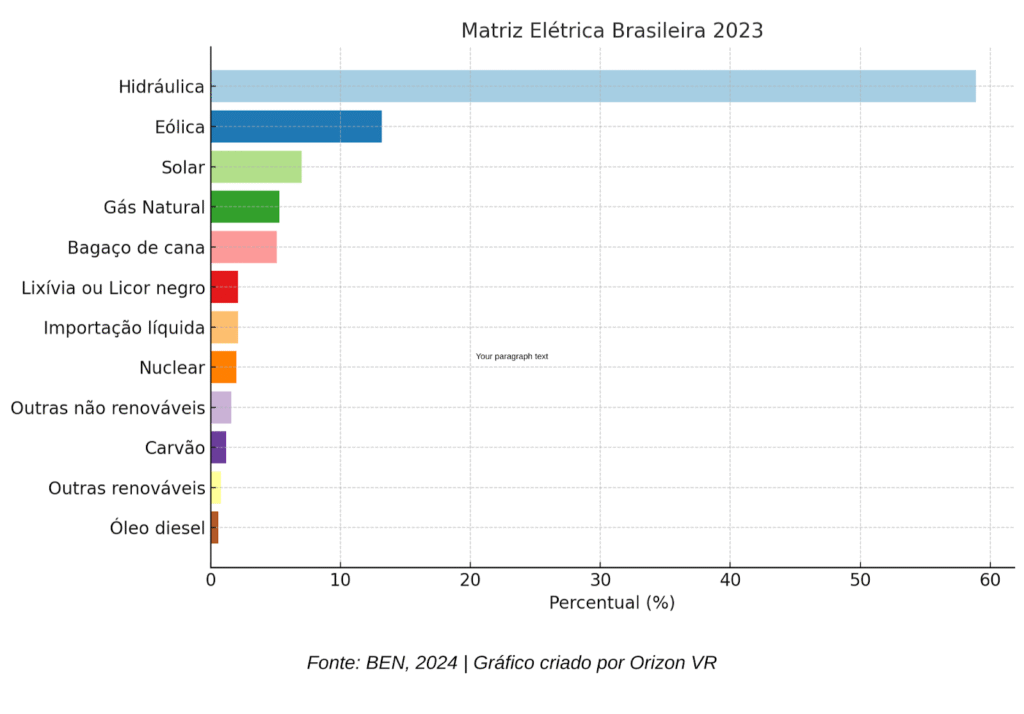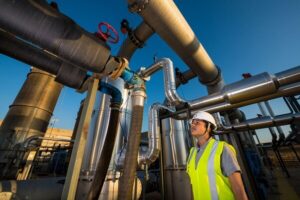
The energy transition is in full swing and, as a result, different mechanisms are being created in Brazil to meet national demand. But how does this work in practice? Learn how the Renewable Electricity Market operates and how it ensures energy distribution with safety, sustainability, and financial health.
Overview of Electricity in Brazil
Brazil is internationally recognized for its renewable electricity supply, as in 2022, 86% of the country’s electricity came from renewable sources.

Although this is an extremely positive figure compared to the global scenario—where fossil fuels are the dominant energy source—renewable electricity in Brazil faces challenges due to its dependence on hydroelectric supply, such as:
- Water scarcity resulting from climate change;
- Increased consumption of electronics and appliances due to globalization.
Due to these challenges, in recent years it has become essential to discuss the growth of diversified energy matrices to promote competitiveness, economic growth, and energy supply security.
Understanding Electricity Distribution in Brazil
Currently, electricity in Brazil is delivered through the Regulated Market, where the utility company receives a concession area and is responsible for connecting power generators to consumers, or through the Free Market, where companies can choose their energy providers directly.
To ensure supply across the country, two main entities are responsible for electricity distribution in Brazil:
Electricity Trading Chamber (CCEE)
The CCEE is responsible for the “contractual world.” It registers, discloses, manages, and supervises all energy generated and consumed in Brazil to monitor the balance between supply and demand in the country.
The Chamber deals with generators, distributors, traders, and consumers, assessing supply needs.
It is responsible for managing the Free Market, publishing and conducting auctions, drafting contractual instruments, handling financial settlement of energy transactions, and supporting the energy transition.
National System Operator (ONS)
The ONS ensures energy security in the physical world. It is responsible for coordinating and controlling the operation of power generation and transmission facilities within the National Interconnected System (SIN).
The ONS’s role is to ensure electricity is regularly distributed so that all regions of the country are supplied.
How the Renewable Electricity Market Works in Brazil
The country has both the Regulated Market and the Free Market—learn how each one works.
Regulated Market (ACR)
The Regulated Market primarily supplies individuals and small businesses. Here, energy is generated from various sources, and the price is regulated according to supply and demand each month.
This format is more unpredictable in terms of cost since, in the event of production and supply imbalances—such as during droughts—the tariff flag may change, making it more expensive.
Consumers in the Regulated Market have no negotiation power and pay for their energy through a monthly bill that includes generation, transmission, and distribution costs, sector charges, and taxes.
Free Market (ACL)
The Free Electricity Market was formalized in 1998, initially aimed at companies consuming more than 500 kW monthly so they could contract energy directly from suppliers.
In this model, energy costs are more predictable since long-term contracts can be signed, avoiding tariff flag fluctuations.
Currently, consumers in the Free Market fall into two main categories:
Free Consumer: a consumer with a minimum contracted demand of 500 kW. This category has the freedom to purchase energy from any source, conventional or alternative.
Special Consumer: refers to consumer units with contracted demand between 500 kW and 1,999 kW, which must be grouped with others to reach the minimum threshold. These units must belong to the same corporate group or be physically close. They are required to purchase energy exclusively from incentivized sources.
This expansion of the Free Electricity Market is essential in the energy transition context as it promotes the use of clean energy sources such as Biomass, Solar, Wind, Geothermal, etc.
To acquire energy in the Free Market, the user must choose a trusted retail energy trader.
The structure of the electricity market in Brazil is evolving to meet the challenges of the energy transition, expanding access to renewable sources and promoting greater freedom and efficiency in consumption.
The growth of the Free Market and encouragement of alternative sources not only reduce costs for companies but also contribute to a more sustainable future.
For companies and conscious consumers, understanding this ecosystem is an essential step toward decarbonizing the economy and using natural resources responsibly.



